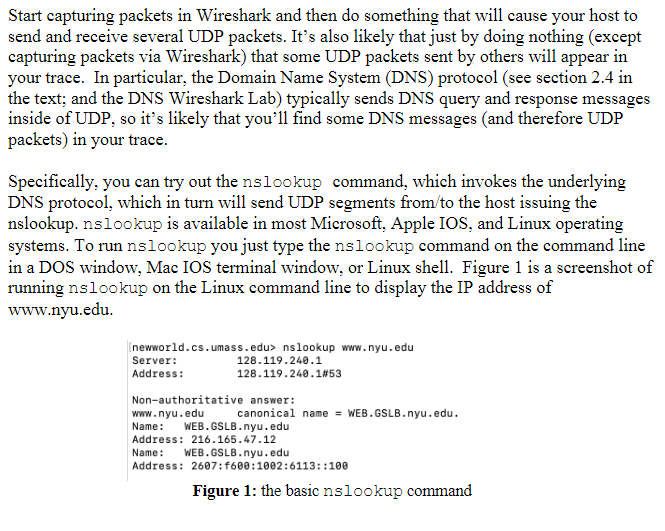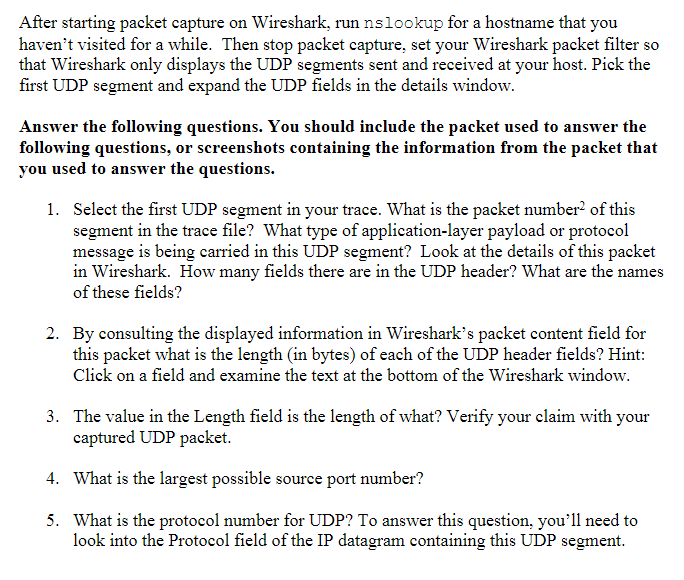
 Please provide screenshots of packets used for this assignment
Please provide screenshots of packets used for this assignment
Start capturing packets in Wireshark and then do something that will cause your host to send and receive several UDP packets. It's also likely that just by doing nothing (except capturing packets via Wireshark) that some UDP packets sent by others will appear in your trace. In particular, the Domain Name System (DNS) protocol (see section 2.4 in the text; and the DNS Wireshark Lab) typically sends DNS query and response messages inside of UDP, so it's likely that you'll find some DNS messages (and therefore UDP packets) in your trace. Specifically, you can try out the nslookup command, which invokes the underlying DNS protocol, which in turn will send UDP segments from/to the host issuing the nslookup. nslookup is available in most Microsoft, Apple IOS, and Linux operating systems. To run nslookup you just type the nslookup command on the command line in a DOS window, Mac IOS terminal window, or Linux shell. Figure 1 is a screenshot of running nslookup on the Linux command line to display the IP address of www.nyu.edu. Figure 1: the basic nslookup command After starting packet capture on Wireshark, run nslookup for a hostname that you haven't visited for a while. Then stop packet capture, set your Wireshark packet filter so that Wireshark only displays the UDP segments sent and received at your host. Pick the first UDP segment and expand the UDP fields in the details window. Answer the following questions. You should include the packet used to answer the following questions, or screenshots containing the information from the packet that you used to answer the questions. 1. Select the first UDP segment in your trace. What is the packet number 2 of this segment in the trace file? What type of application-layer payload or protocol message is being carried in this UDP segment? Look at the details of this packet in Wireshark. How many fields there are in the UDP header? What are the names of these fields? 2. By consulting the displayed information in Wireshark's packet content field for this packet what is the length (in bytes) of each of the UDP header fields? Hint: Click on a field and examine the text at the bottom of the Wireshark window. 3. The value in the Length field is the length of what? Verify your claim with your captured UDP packet. 4. What is the largest possible source port number? 5. What is the protocol number for UDP? To answer this question, you'll need to look into the Protocol field of the IP datagram containing this UDP segment

 Please provide screenshots of packets used for this assignment
Please provide screenshots of packets used for this assignment





